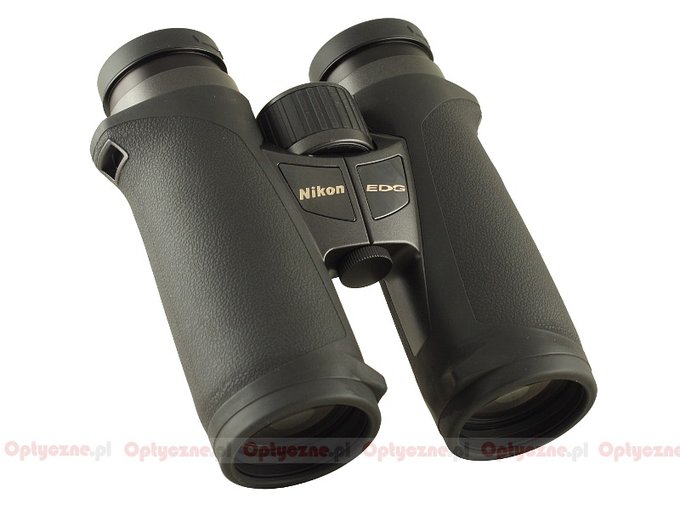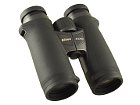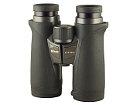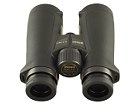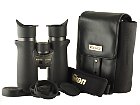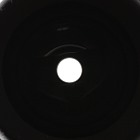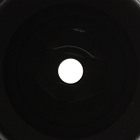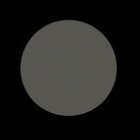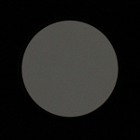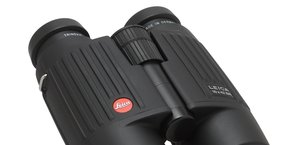Nikon 8x42 EDG
In the new EDG series we have five models of binoculars at our disposal with the following parameters: 8x32, 10x32, 7x42, 8x42 and 10x42. They boast low-dispersion ED glass in objectives and high quality eyepieces with a flat field – because of these features the image is supposed to be very sharp in the whole field of view. The binoculars have the Schmidt-Pechan roof prism system with phase correction coating and dielectric coating, featuring ultra-high reflectivity - as much as 99% of light ranging from 400 to 700 nm is reflected by them. The casing is very durable, waterproof up to a depth of 5 meters (for 10 minutes) and nitrogen-filled.
The buyer gets a neck strap, a soft case, joined eyepiece caps, objective caps attached to the tubes and additional, horn-shaped eyecups which can be simply put on those permanently fixed to the eyepiece. The binoculars come with ten-year consumer warranty.
| Magnification | Lens diameter | Angular field of view | Prisms | Eye relief | Weight | Price |
|---|---|---|---|---|---|---|
| 8 | 42 | 135/1000(7.7o) | BaK-4/roof | 19.3 mm | 785 g | 8699 PLN |
Summary
Pros:
- very solid and airtight casing,
- high transmission,
- perfectly sharp image across the whole field of view,
- great correction of chromatic aberration,
- very low astigmatism,
- slight coma,
- well-corrected distortion,
- slight brightness loss on the edge of the field,
- nice, circular exit pupils on an almost black background,
- very good whiteness rendering,
- perfect blackening inside the tubes,
- wide range of tube axes gauge,
- high quality of prisms and coatings.
Cons:
- a bit too weak work against bright light.
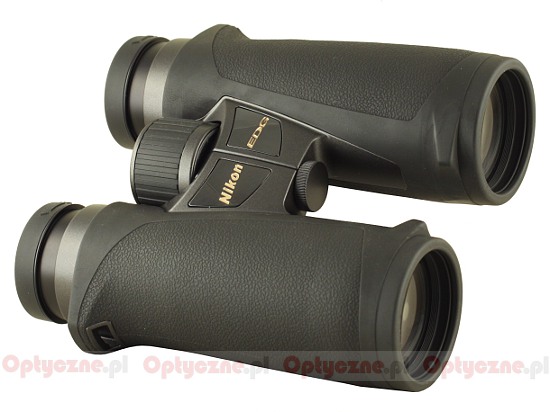 |
After the test of the 10x42 EDG model, we knew more or less what we should expect in the case of the 8x42 EDG. The result of the latter is excellent but still not as good as that of its 10x42 brother. Why? A bit different construction of the eyepiece might be one of the reasons – its apparent field of view is about 5 degrees narrower and it corrects the distortion a bit worse at the same time. The transmission graph is also slightly different. Although its general shape remains similar, you can notice some subtle differences. The graph of the 8x42 model is a bit more flat which assures practically perfect colour rendition but a bit lower maximum transmission as well.
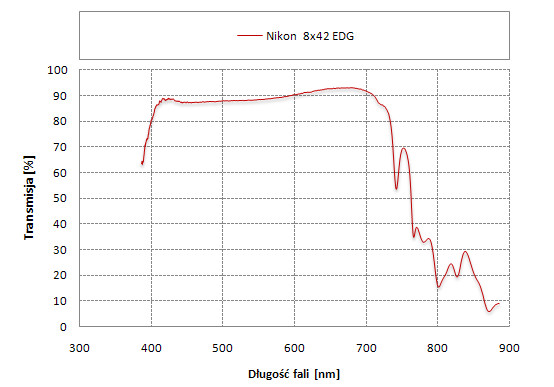 |
However, as we are dealing with a piece of equipment at such price point the maximum transmission doesn’t impress a lot because the level of 91-92% can be exceeded by much cheaper pairs of binoculars; still the overall look of the transmission graph deserves our recognition. Firstly and foremostly it is very flat so even at both ends of the visible spectrum the high transmission level is kept. It’s worth noticing here that on the border between blue and purple light the transmission reaches almost 90%.
Only few sets of binoculars can boast about such a value. Overall, when you integrate the values for the whole visible spectrum it turns out the Nikon is able to deliver more light than binoculars with higher maximum transmission but weaker results on the edge of the range. What’s interesting, although the transmission is good (so the antireflection coatings work as they should) and the blackening is excellent, still something seems to be wrong inside. It’s enough to look through the Nikon EDG at night in the direction of a lamp post and you can see obvious flares, something the most serious competitors and even the cheaper Nikon HG lack. Such surprises are painful especially if you consider the price of this piece of equipment.
Swarovski EL Swarovision 8.5x42, Nikon 8x42 EDG and Leica Ultravid 8x42 HD. |
If you want to be honest you must emphasize the fact that it is the only slip-up of the tested binoculars. In all other testing categories the Nikon 8x42 EDG has good, very good or even excellent results. The perfectly flat field of view, corrected practically to the very edge, is especially impressing. Undoubtedly the Nikon 8x42 EDG belongs to that small group of binoculars, launched recently, which are able to raise the optics quality to quite a different level. It is a pity that the price level has been raised as well. What’s more, the Nikon company proved one more time that, among all Asian optics producers, they are the strongest and the bravest competitor of the European big trio (Leica Swarovski and Zeiss). We don’t think here only about the EDG series devices, we also mean SE, HG or EII series models.





